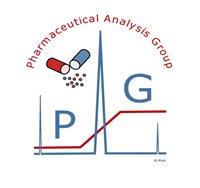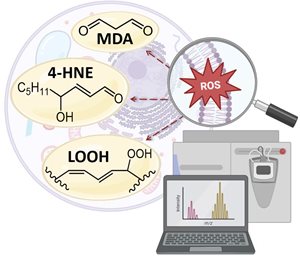 The Pharmaceutical Analysis Group focuses on developing modern tools for the analysis of active pharmaceutical ingredients, pharmaceutical preparations, and excipients. Attention is also paid to the analysis of drugs including new drug candidates, their metabolites, and endogenous compounds in relevant biological materials. The application of the methods to the analysis of samples from various in vitro and in vivo experiments provides information about the transport mechanisms and other processes taking place in the living systems. Thus, the methods significantly contribute to the understanding of the relationship between pharmacokinetics and pharmacodynamics/toxicity of the analysed compounds as well as help to elucidate the mechanisms of their biological effects.
The Pharmaceutical Analysis Group focuses on developing modern tools for the analysis of active pharmaceutical ingredients, pharmaceutical preparations, and excipients. Attention is also paid to the analysis of drugs including new drug candidates, their metabolites, and endogenous compounds in relevant biological materials. The application of the methods to the analysis of samples from various in vitro and in vivo experiments provides information about the transport mechanisms and other processes taking place in the living systems. Thus, the methods significantly contribute to the understanding of the relationship between pharmacokinetics and pharmacodynamics/toxicity of the analysed compounds as well as help to elucidate the mechanisms of their biological effects.
Our research activities are focused on the following areas:
.png.aspx?width=400&height=296)
Development of bioanalytical methods
Development of modern bioanalytical methods for evaluation of exogenous and endogenous compounds in biological materials (mostly novel cardioprotective agents and their prodrugs; anthracyclines, tryptophan metabolites, catecholamines, etc). The main aim is to simplify and accelerate the whole bioanalytical process and to acquire data, which are essential for the evaluation of the fate of the compounds in an organism.
.png.aspx?width=400&height=360)
Chiral separations of cobalt bis(dicarbollide)(1-) derivatives
These interesting abiotic compounds are being studied due to their potential use in many areas (stereoselective synthesis, development of new drugs, materials chemistry, etc.). The area of chiral separation especially of anionic compounds is practically untouched, although the properties of these compounds might be significantly influenced by the stereo-configuration.
.jpg.aspx?width=440&height=205) Separation of novel molecular probes
Separation of novel molecular probes
Azaphthalocynine dyes represent a new group of quenchers that are applicable in molecular probes to monitor PCR. The chromatographic methods for the evaluation of the new molecular probes require a focus on selectivity while keeping the analysis time reasonable due to the fact, that the physical-chemical properties of azaphthalocynines differ considerably from commonly used quenchers.
.png.aspx?width=400&height=196)
Electromembrane extraction
The use of microextraction techniques for sample preparation of complex biological matrix prior to analysis. We are focusing mostly on electromembrane extraction as well as other liquid-phase microextraction techniques. Based on our previous experiments, these methods have a high potential to be simple and effective tools for sample clean-up prior to the chromatographic analysis applicable also in clinical laboratories.

Monitoring of oxidative stress biomarkers
The development of sensitive methods for monitoring oxidative stress biomarkers with a focus on oxidative modifications of cardiolipins and secondary lipid peroxidation products (e.g., malondialdehyde and 4-hydroxynonenal) from various biological matrices (cells, body fluids and tissues) and their application in toxicological studies.
.jpg.aspx?width=400&height=282)
Stability testing
The evaluation of the stability of novel drugs, including identification of the principal degradation products and main decomposition pathways. We are also focused on the development of novel stability-indicating analytical methods.